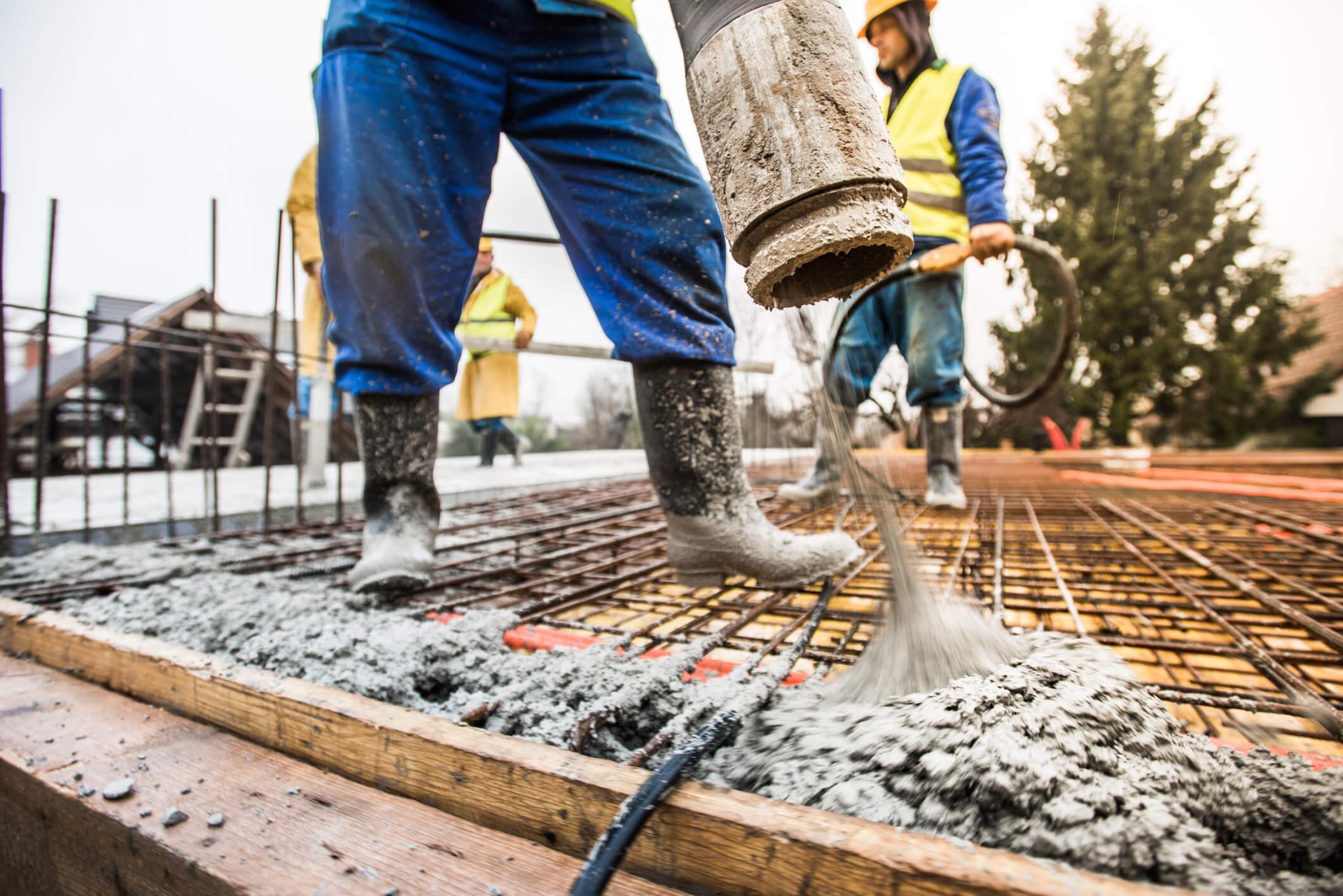Posted on June 08, 2023
There’s more than 4 billion metric tons of concrete produced every year. That’s more than a thousand pounds for every one of the 8 billion people on the planet.
The cement needed to produce all this concrete comes from clinker produced in giant kilns. These behemoths are typically about 650 long and roughly 20 feet in diameter. A high-temperature process called calcination produces the calcium oxide needed to make cement. It is commonly called quicklime or burnt lime.
Ultimately, only about 8% of concrete is quicklime. However, it accounts for some 90% of concrete's total CO2 emissions. Roughly half of it comes from burning fossil fuels to maintain very high temperatures in the kilns. The other half is emitted during calcination, as calcium carbonate breaks down into calcium oxide and carbon dioxide.
What if it were possible to eliminate high-temperature kilns entirely? A new electrochemical process does just that.
Importance of Low-carbon Cement
Why is this new technology potentially so important? Because low-carbon cement is a key component of the assault on climate change. In recent decades, the industry has made significant strides in tackling emissions.
Supplementary cementitious materials (SCMs) cut emissions by reducing the amount of cement required to produce concrete. Now, carbon capture, utilization, and storage (CCUS) is also making a contribution. Newer dry-process systems replete with staged preheaters and precalciners also reduce emissions. However, every approach has its limits.
Limits of SCMs
While SCMs help, there are limits. SCMs are the “low-hanging fruit” of the decarbonization of cement. They are not a complete solution, as they only replace cement up to a point. The percentage of cementitious content coming from SCMs varies. For example, fly ash can account for 10-40% of the total, while blast furnace slag can account for 20-50%. Meanwhile, silica fume can only account for 5-10% of the total.
Limits of new kiln technologies
Wet-process kilns get replaced with energy-efficient dry process systems. More effective grinding equipment has also helped. Biomass can replace 10-30% of the coal and petcoke commonly used in cement kiln combustion. In one test, Lafarge burned thousand-pound bales of perennial crops to cut fossil fuel use.
Limits of CCUS
Carbon capture, utilization and storage (CCUS) is also heralded as a way to cut emissions. Once again, there are limits. CO2 emitted during calcination mixes with other flue gasses, making it difficult to capture.
Progress continues on this front, however. For example, in 2021, a CCS Feasibility Study examined the viability of capturing 90-95 per cent of the CO2 generated at a Lehigh plant in Edmonton, AB.
To achieve carbon reduction goals, clinker’s thermal energy intensity must still drop precipitously. As the IEA notes, “The global thermal energy intensity of clinker is estimated to have remained relatively flat over the past five years, at 3.4-3.5 GJ/t.”
Until recently, radical decarbonization of concrete, steel, and aluminum seemed a mere pipedream. Now, products like HYBRIT steel, Elysis aluminum, and Sublime cement may help make the dream a reality. These products rely on low-emissions solutions like hydrogen, oxygen, and electrochemistry, respectively.
Electrochemistry and Cement
Electrochemistry applications include batteries, fuel cells, and electroplating. Other examples include electrolysis, electrosynthesis, flow batteries, and decontamination of industrial effluent.
Now, researchers have found a way to use electrochemistry to make cement. Eliminating the need for traditional high-temperature processes would speed up decarbonization. Electrochemical reactors rely on electricity rather than heat for calcination.
Sublime Systems
One company devoted to the process is Sublime Systems in Somerville, MA. Its cement production goes like this:
An electrochemical reactor breaks down calcium carbonate into calcium hydroxide powder
The process releases easy-to-capture streams of carbon dioxide, oxygen, and hydrogen.
The calcium hydroxide is reacted with sand and clay at 1500°C using the oxygen and hydrogen.
The process works with diverse calcium-bearing sources, even impure ones. This is because the process is naturally purifying. This makes the CO2 emissions easier to collect. Streams of clean-burning oxygen and hydrogen replace fossil fuels.
When calcium carbonate enters the electrolyzer, calcium ions migrate toward the negative electrode. There, they precipitate calcium hydroxide. Use of a non-carbonate source combines with renewable electricity to deliver carbon-neutral lime.
Every month, Sublime’s facility churns out a ton of cement that is strong, fast-setting, cost-competitive, and low-carbon. The process takes an estimated 1.44 to 1.97 kWh of electricity to produce one kilogram of cement. Plant operators can synchronize electrochemical calcination with times when renewable energy is available.
Sublime now plans to construct a commercial-grade demonstration plant by 2025. It will produce hundreds of thousands of tons of cement per year. Next, Sublime hopes to construct a full-scale plant that will be operational by 2028. Its capacity will be 1 million tons per year. Even if that plant is successful, much scaling would remain. A million tons is still less than 1% of the 120 million tons of U.S. cement production projected for 2028.
University of British Columbia
University of British Columbia researchers have also advanced electrochemical cement production. They've come up with lower voltage electrochemical cement production. Their more energy-efficient “cement electrolyzer” breaks down limestone at a lower voltage: 1.8 volts at 100 mA cm–2 versus the previous benchmark of 4.2 volts.
The research team improved performance by oxidizing the H2 byproduct from the cathode into photons. This decreases the cost of cement by $36 per ton compared to using the hydrogen to fuel a kiln.
Electrochemistry’s potential reaches well beyond the cement industry. As MIT’s Yet-Ming Chiang asserts, electrochemical calcination should be viewed as part of a global strategy to “electrify everything.”
About PACA
The Pennsylvania Aggregate and Concrete Association (PACA) uses SpecifyConcrete.org to report on industry innovation. Do you have questions about your upcoming concrete project? Please contact our team for assistance!

